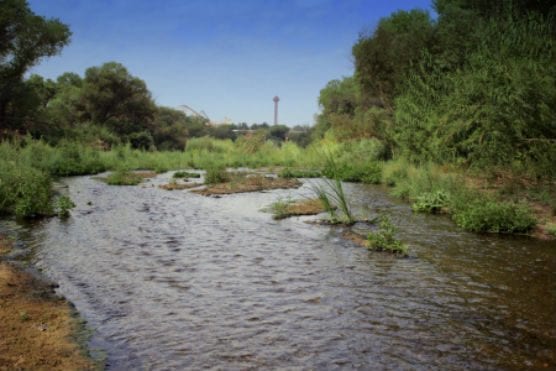In light of back-to-back lawsuits that stalled construction, state water regulators have granted the Santa Clarita Valley Sanitation District more time to complete its four-year plan to reduce the amount of chloride discharged into the Santa Clara River watershed.
On March 12, the Los Angeles Regional Water Quality Control Board issued a tentative time schedule order, giving sewer officials a three-year extension to complete its plans.
Sewer officials were able to convince the board that lawsuits filed by an SCV group of ratepayers, called the Affordable Clean Water Alliance (ACWA), stopped it from working on the plan. The group challenged the district’s assessment of the impacts the chloride plan would have on the environment.
“Regarding the delays caused by the lawsuits, we are asking for an extension to January 2022,” Bryan Langpap, spokesman for the Santa Clarita Valley Sanitation District, said Monday
“Our chloride-compliance project was delayed due to legal challenge,” he said. “Because of the delay, we are not able to meet various compliance deadlines.”
Regional water officials agreed.
“We have been working with the Los Angeles Regional Water Quality Control Board, the regulator for the chloride limit, to demonstrate that these delays were beyond our control and that we have made our best effort to comply,” Langpap said.
The extension is scheduled to be finalized May 9.
Until then, the public has a chance to weigh in on the decision. Written comments must be received at the regional board’s office at 320 West 4th St., Suite 200, Los Angeles, 90013, by 5 p.m. Wednesday.
Comments may also be made at a public hearing scheduled 9 a.m. Thursday, May 9, in the city of Malibu at 23825 Stuart Ranch Road.
If the TSO is approved and the SCV Sanitation District meets the TSO requirements, the SCV Sanitation District and its ratepayers will avoid regulatory fines.
Anyone who wants to read details of the time schedule order can do so by visiting: https://www.waterboards.ca.gov/losangeles/board_decisions/tentative_orders/#3.
In February, sewer officials announced they were scuttling recycled water plans because of the lawsuits.
They also said the civil suits threw them off schedule to reduce salty chloride as promised to state officials in October 2014.
The Sanitation District, a Los Angeles County entity with two local representatives that is responsible for regulating local effluence, was mandated to reduce the amount of chloride, or salt, that discharges from SCV treatment plants into the Santa Clara River, largely due to concerns by downstream farmers that chloride was damaging salt-sensitive crops such as strawberries and avocados.
The litigation by ACWA delayed compliance with the state-mandated chloride limit by two years and cost ratepayers an additional $5 million, Grace Robinson Hyde, the chief engineer and general manager of the SCV Sanitation District, said in February.
“And, to be very clear,” she said, “all of the legal and resulting costs incurred to date, as well as those potentially incurred in (the) future, have been and will be borne by the ratepayers.”
Like this:
Like Loading...
Related





 Tweet This
Tweet This Facebook
Facebook Digg This
Digg This Bookmark
Bookmark Stumble
Stumble RSS
RSS


























REAL NAMES ONLY: All posters must use their real individual or business name. This applies equally to Twitter account holders who use a nickname.
1 Comment
Holy-Moley! We’re killing acres and acres of strawberries and avocados? If that’s a fact, then we should be against all the added neighborhood developments that increase the chloride-juicing of the Mighty Little Santa Clara River!
Yeah, sure. Ventura County as the down-river users long since the SCV has begun developing have done nothing to protect their water sources other than file lawsuits. They do not do Arundo removal, they do not apply water controls and restrictions from feed-in canyons and streams, and they do not keep tight controls on how their Ag users treat and protect the water that they do have control over.
Sure, SCV and its ownership(s)should be doing things to mitigate any increased sodium chloride
burden caused by upstream development…but that should also consider the natural chloride burden that pours out from the San Gabriel Mountains and into the Santa Clara River, and then consider what is added by developments and their use.
Otherwise, it’s just a ploy to make the SCV pay for Newhall Land and Framing properties’ salt dumping at the county border, as well as giving the Avocado orchardists in the Ventura area an excuse to blame salty water at the coast (as well as the strawberry growers) on somebody else.